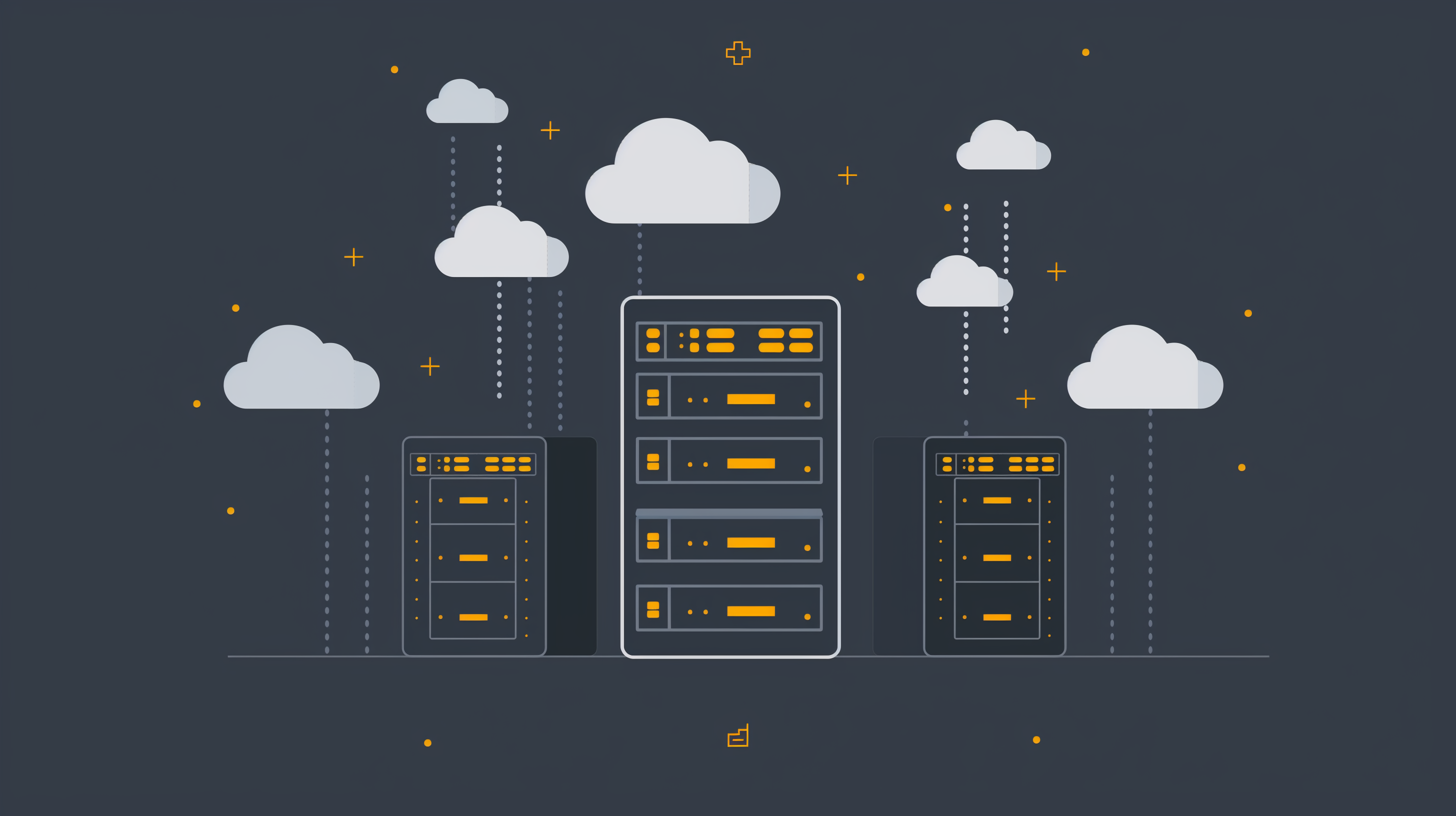AWS Elastic Load Balancers: Why Make One Thing Simple When You Can Have Four Complexities?
 Supriyo Sarkar
Supriyo Sarkar
Welcome back, Senpai 🙈. In this session, we're diving into the wonderfully convoluted world of AWS Elastic Load Balancers. Buckle up, because we have four—yes, four—different types of load balancers to discuss. It's like AWS decided to open a buffet and offer every conceivable flavor of load balancing. So let's dig in and figure out what each type does, why it's different, and when you might use it.
Butt....What the Heck is a Load Balancer? 🤔
Before we get into the nitty-gritty, let's clear up what a load balancer actually is. Picture it as a traffic cop standing in the middle of a busy intersection, directing cars (or, in this case, data packets) to different roads (servers). The idea is to prevent any one road from getting too congested by spreading the load evenly. In AWS, a load balancer sits between your incoming traffic and your servers (or ECS containers, or Lambda functions, or whatever backend you're using), making sure everything flows smoothly. Sounds simple, right? Just wait.
The Four Horsemen of the Load Balancer Apocalypse 🐴
1. Application Load Balancer (ALB): The Layer Seven Diva 👑
First up is the Application Load Balancer, the queen of the Layer 7 load balancing world. According to the OSI model, Layer 7 is the application layer, meaning this load balancer is practically sitting in the application’s lap.
Port Support: ALB only supports two ports: Port 80 (HTTP) and Port 443 (HTTPS). If your traffic is coming in on any other port, you’re out of luck.
Protocol Support: HTTP, HTTPS, and gRPC are your friends here. Anything else? Look elsewhere.
SSL Termination: ALB can handle SSL termination, meaning it can decrypt traffic and pass it on to your instances unencrypted. This takes the decryption load off your instances, letting them focus on more important tasks like serving cat videos 🐱.
Cognito Integration: ALB integrates with Amazon Cognito and OpenID Connect (OIDC). This means your users can get a login screen right from the load balancer before they even touch your app. Your app remains blissfully unaware of the login process 😌.
Lambda Integration: Not just limited to EC2 instances or ECS containers, ALB can also route traffic to Lambda functions. Talk about being versatile!
Advanced Routing: One of the standout features of ALB is its ability to perform advanced routing. You can route traffic based on URL, hostname, HTTP header, and HTTP method, allowing for sophisticated traffic management. For example, you can route all requests for /images to one set of servers and requests for /videos to another.
2. Network Load Balancer (NLB): The Layer Four Muscle 💪
Next, we have the Network Load Balancer, which operates at Layer 4 of the OSI model. This means it's handling lower-level network protocols, oblivious to the nuances of HTTP and HTTPS.
All Ports Welcome: Unlike its application-layer sibling, the NLB supports all ports. TCP, UDP, and TLS are all fair game.
SSL Termination: Yes, the NLB can also terminate SSL, but don't expect it to understand the higher-level protocols.
No Cognito or Lambda: NLB doesn't play well with Cognito or Lambda. It's too busy being a network-level traffic cop to worry about things like user authentication or serverless functions 🚦.
High Performance: NLB is designed for high performance and can handle millions of requests per second while maintaining ultra-low latencies. It’s ideal for applications that require extreme performance and can’t afford any delay in traffic handling 🚀.
Static IPs: NLB supports static IP addresses, which can be a requirement for certain applications. You can assign Elastic IPs to your load balancer, making it easy to whitelist IPs in your firewalls and manage your infrastructure.
3. Gateway Load Balancer (GWLB): The Traffic Monitor 🕵️
Third on our list is the Gateway Load Balancer, which operates at both Layer 3 and Layer 4. This one is less about balancing traffic and more about analyzing it.
Inline Network Analysis: GWLB is designed for situations where you need to inspect every packet coming in and out of your network. It’s like having a security guard that checks every visitor's ID before letting them into the building 🏢.
Third-Party Appliances: You can use GWLB to integrate third-party network appliances into your AWS environment, useful for things like deep packet inspection, firewalling, and intrusion detection. But be prepared for a bit of latency ⏳.
Scalable Network Functions: GWLB enables you to deploy and manage virtual network functions (VNFs) from third-party vendors. This means you can scale out network security, intrusion prevention, and other network services without compromising on performance.
High Availability: Like the other load balancers, GWLB is designed for high availability and fault tolerance. It can distribute traffic across multiple instances of your third-party appliances, ensuring continuous service even if one instance fails.
4. Classic Load Balancer (CLB): The Granddaddy 👴
Finally, we have the Classic Load Balancer, the venerable elder of the group. This was AWS's first load balancer, back when dinosaurs roamed the earth and everyone used EC2 Classic instances 🦖.
Layer 4 and 7: CLB can operate at both Layer 4 and Layer 7, handling all the protocols—TCP, SSL, TLS, HTTP, and HTTPS.
SSL Termination: Yes, it can do that too.
Limited Features: CLB doesn’t support the fancy new features that ALB and NLB do. No Cognito integration, no Lambda routing. It’s like your old Nokia phone—solid, reliable, but a bit outdated 📞.
EC2 Classic: The only real reason to use a CLB these days is if you're still working with legacy EC2 Classic instances. If that’s you, well, good luck, and may the odds be ever in your favor 🍀.
Basic Health Checks: CLB offers basic health checks to ensure traffic is only sent to healthy instances. While it’s not as advanced as the health checks available in ALB and NLB, it still gets the job done for most basic use cases.
Choosing the Right Load Balancer: It’s a Jungle Out There 🌴
So, which load balancer should you use? It depends on your needs:
Application Load Balancer: Use this when you need advanced routing, user authentication via Cognito, or the ability to route traffic to Lambda functions. Ideal for HTTP and HTTPS traffic.
Network Load Balancer: Go with NLB if you need ultra-low latency, can handle any port, or need to support TCP, UDP, and TLS traffic. Perfect for non-HTTP/HTTPS applications.
Gateway Load Balancer: Choose GWLB if you need to insert a third-party appliance into your network for things like security monitoring and compliance.
Classic Load Balancer: Only opt for CLB if you’re dealing with legacy EC2 Classic instances or need a basic, no-frills load balancer.
Real-World Use Cases 🌐
Let's explore some real-world scenarios where each type of load balancer might be the best fit:
Application Load Balancer: Imagine you're running a complex web application that includes multiple microservices. You need to route traffic based on the URL path, such as /api going to one set of microservices and /user going to another. You also want to offload user authentication to Cognito. ALB is your best bet here due to its advanced routing capabilities and integration with Cognito.
Network Load Balancer: Suppose you have a gaming application that requires extremely low latency and needs to handle a large number of simultaneous connections. Your application uses TCP for real-time data exchange. NLB, with its ability to handle millions of requests per second and support for all ports, is the ideal choice.
Gateway Load Balancer: Consider a scenario where you're required to comply with stringent security regulations and need to inspect all incoming and outgoing traffic. You decide to use a third-party firewall appliance for deep packet inspection and intrusion detection. GWLB allows you to seamlessly integrate this appliance into your network, providing high availability and scalability.
Classic Load Balancer: You’re maintaining an old application that still runs on EC2 Classic instances. Since CLB is the only load balancer that supports these instances, you’ll need to stick with it. It might not have the latest features, but it’s reliable and gets the job done.
Migration Considerations 🛠️
If you're currently using a Classic Load Balancer and considering a move to either an ALB or NLB, here are some points to keep in mind:
Feature Set: Assess the features you need. If you require advanced routing and integration with services like Cognito, ALB is the way to go. For high performance and support for multiple ports, consider NLB.
Cost: Compare the cost implications of migrating to a new load balancer. While ALB and NLB offer more features, they might also come with a higher price tag depending on your usage.
Configuration: Plan for the configuration changes required in your application. This includes updating DNS records, reconfiguring health checks, and possibly changing your application's architecture to take full advantage of the new load balancer's capabilities.
Conclusion: Embrace the Complexity 🤯
AWS’s load balancing options are like a Swiss Army knife—lots of tools, and you
need to know which one to use in any given situation. Whether you’re balancing HTTP traffic with an ALB, handling TCP connections with an NLB, monitoring packets with a GWLB, or sticking to old-school methods with a CLB, AWS has you covered. Just remember, each has its strengths and weaknesses, and picking the right one can make the difference between a smooth-running application and a server meltdown.
Understanding these load balancers in detail can make your life significantly easier, helping you to design robust, scalable, and efficient systems that can handle any traffic load thrown their way. So, if you prepare for your AWS Certified DevOps Engineer Professional exam, keep these differences in mind. Not only will it help you ace the test, but it will also make you a more effective and knowledgeable cloud architect.
And that's a wrap for this blog on AWS Elastic Load Balancers. If your head isn’t spinning yet, congratulations—you’re well on your way to mastering AWS. Join me next time as I continue to untangle the web of AWS services. Until then, keep your load balanced and your servers happy! 🌟
Subscribe to my newsletter
Read articles from Supriyo Sarkar directly inside your inbox. Subscribe to the newsletter, and don't miss out.
Written by

Supriyo Sarkar
Supriyo Sarkar
I make blogs about AWS, System Design, JavaScript, Node.js and Anything related to programming. You can follow me .